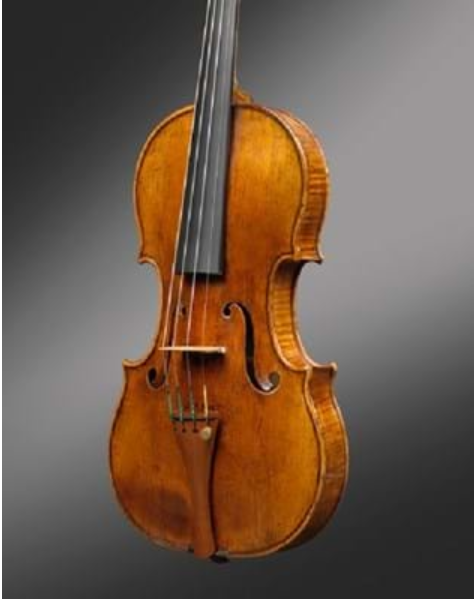- In the late 1600s and early 1700s, Italian Antonio Stradivari made around 1,100 instruments – mostly violins, but also violas, cellos, guitars, mandolins and harps. About 500 of them survive today.
- Stradivarius violins are some of the most famous and admired around the world. They are considered to be superior to any other instrument because they are said to produce a unique, brilliant, deep sound. They often cost millions of dollars, with the most expensive one selling for $15.9 million in 2011. Many people have unsuccessfully tried to recreate Stradivari’s instruments.

A Stradivarius violin made in 1684 (from Capon, 2017).
How is this related to climate?
- The wood that Stradivarius violins were made of, mostly from spruce and maple trees, grew during the Little Ice Age, a period of widespread cooling and a drop in average global temperatures from around 1300 to 1850, in which Europe was hit particularly hard.
- The drop in temperatures and reduced solar output in regions that were not usually cold hampered the normal growth of trees. Tree rings are composed of two portions, a light and spongy one that is produced during a period of rapid growth in the spring and a dark and dense one that is produced during the fall and winter. Wood of Stradivarius violins has a less pronounced difference between these two portions and is denser overall. The density of the wood affects how sound vibrations travel through it, possibly explaining the high sound quality and intense resonance of Stradivarius violins.
- Other factors may have also influenced the acoustic properties of these world famous violins. For example, Stradivari may have treated the wood with various chemicals, such as aluminum, calcium and copper, or may have applied a special varnish. Regardless, Stradivari was a very talented instrument-maker and the great sound of his instruments is no doubt attributed to his skills.
References and additional resources
- Capon, A. “Stradivarius Violin Takes £1.6m at London Auction.” Antiques Trade Gazette. 2017. https://www.antiquestradegazette.com/news/2017/stradivarius-violin-takes-16m-at-london-auction/.
- Lanchester, J. “How the Little Ice Age Changed History.” The New Yorker. 2019. https://www.newyorker.com/magazine/2019/04/01/how-the-little-ice-age-changed-history.
- Strickland, E. “Did a ‘Little Ice Age’ Create Special Wood for Great Violins?” Discover. 2008. https://www.discovermagazine.com/planet-earth/did-a-little-ice-age-create-special-wood-for-great-violins.
- The Editors of Encyclopedia Britannica. “What’s So Special About Stradivarius Violins?” Encyclopedia Britannica. n.d. https://www.britannica.com/story/whats-so-special-about-stradivarius-violins.
